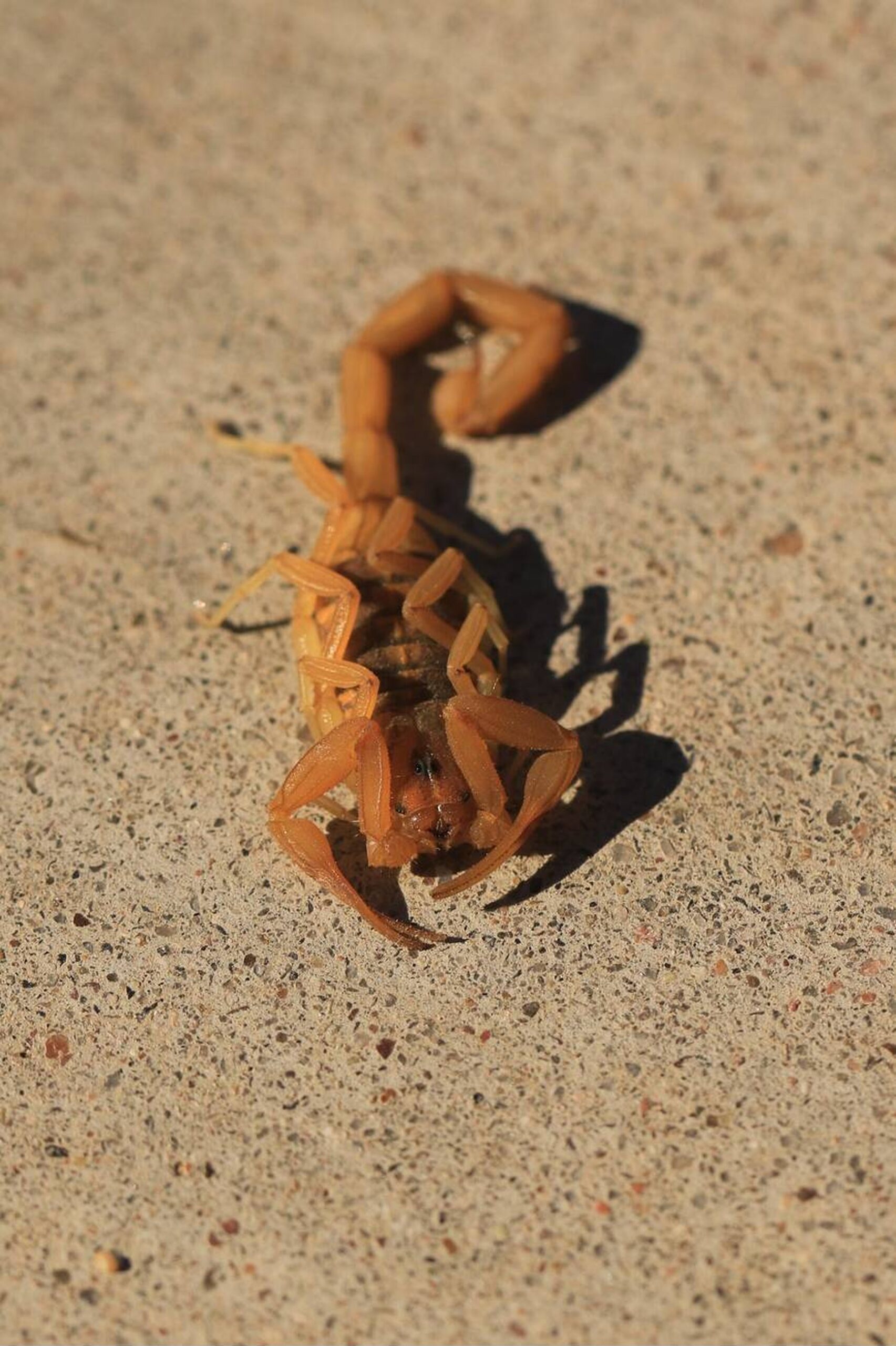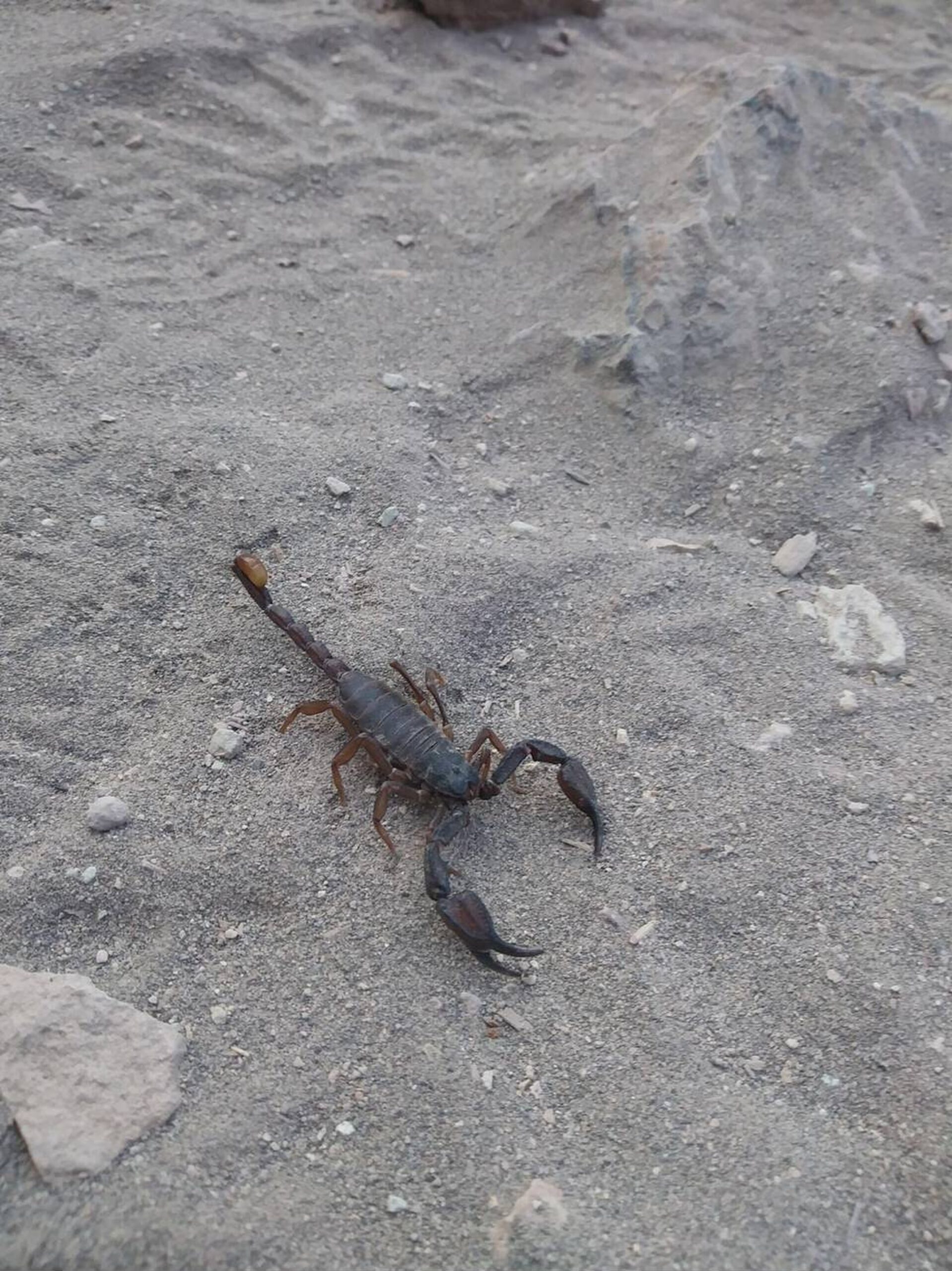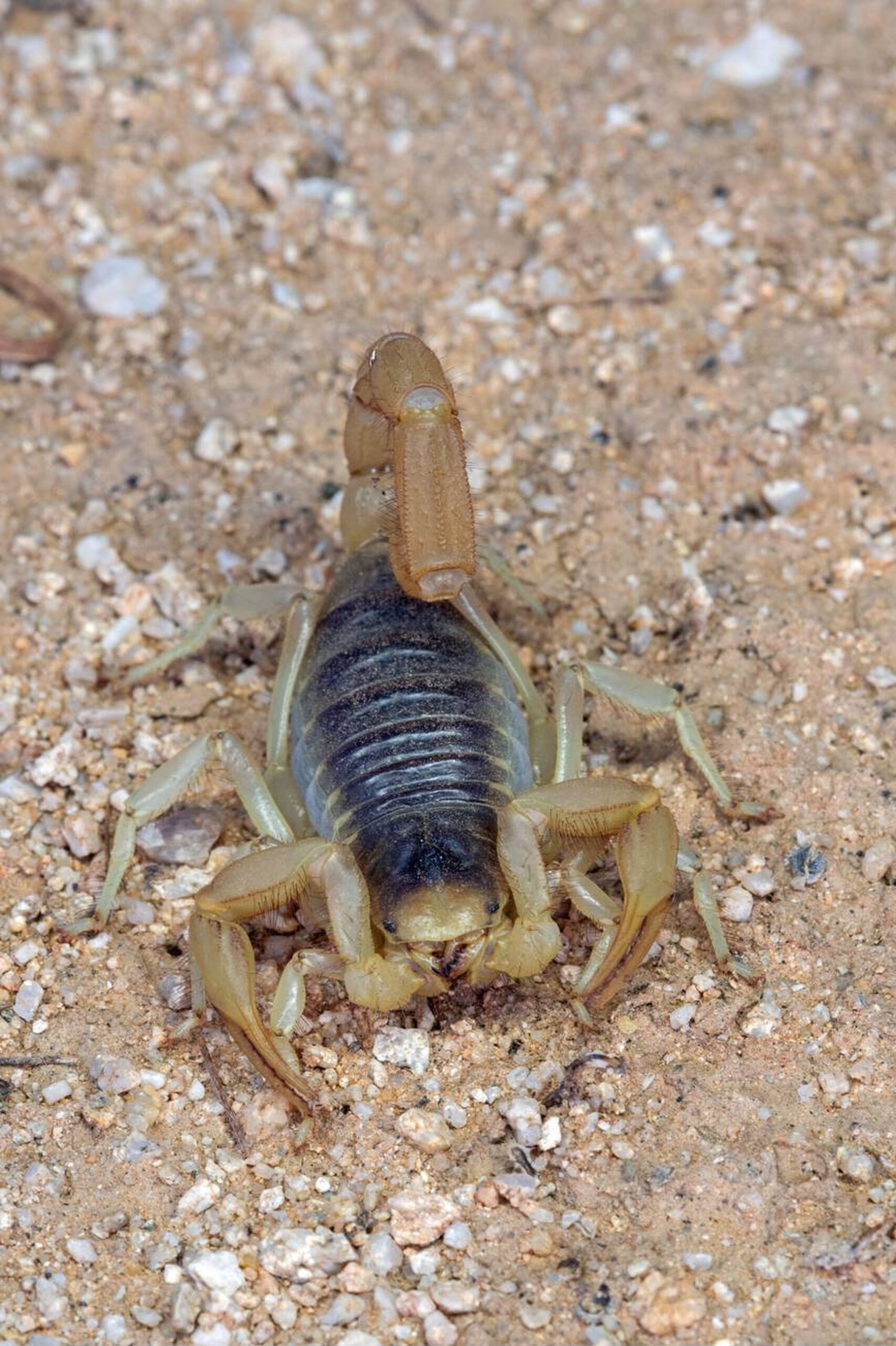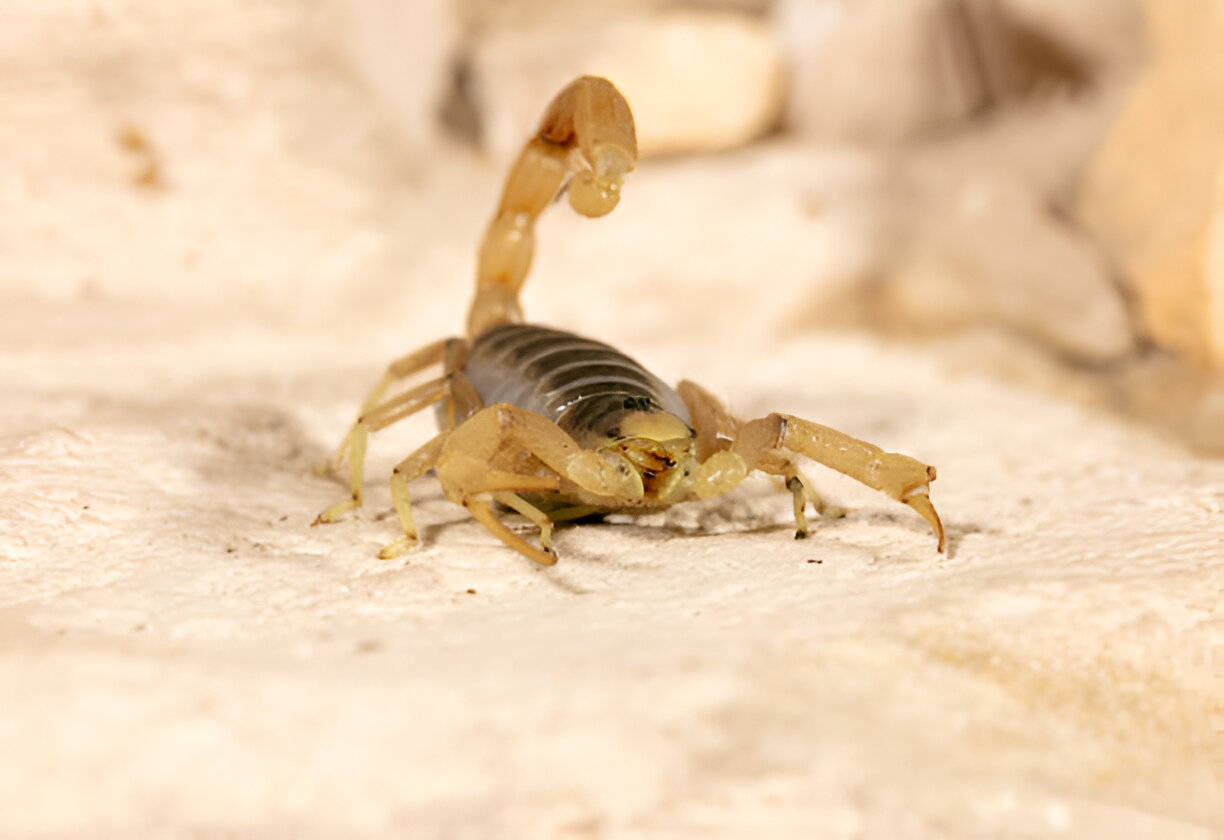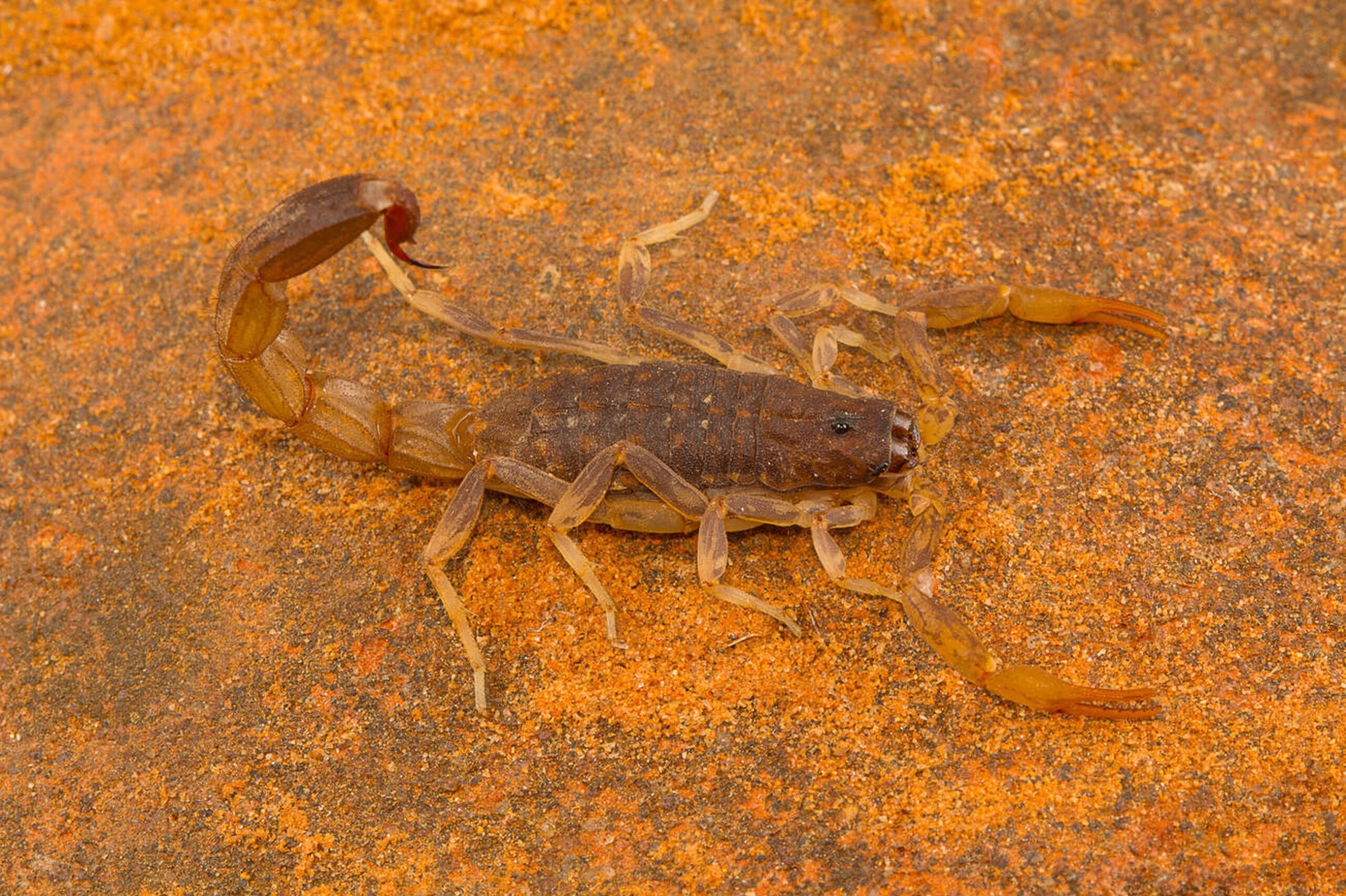The Fascinating World of Scorpions in California: Identification, Prevention and Myths
Introduction
Scorpions are one of the most fascinating members of the arachnid family, and they can be found all over California. From deserts to mountains to cities, there is a variety of scorpion species that make their home in the Golden State. Scorpions are generally nocturnal creatures that feed on other insects and spiders. They have eight legs and two segmented body parts. Scorpions have a venomous sting which they use to defend themselves from predators, so it’s important to be aware of their presence when outdoors in California.
Different Types of Scorpions in California
There are about 40 species of scorpions in California, most of them belonging to the genus Centruroides. The most commonly seen species is the California Bark Scorpion (Centruroides exilicauda), which can be found in a variety of habitats throughout the state. This type of scorpion has a light brown color, and its body length typically ranges from 1 to 3 inches. The Arizona Giant Hairy Scorpion (Hadrurus arizonensis) is one of the largest scorpion species in California, with a body length that can measure up to 7 inches. This species is generally found in desert habitats and has thick black bristles on its body. Another interesting species is the Striped Desert Scorpion (Paruroctonus mesaensis), which has yellowish stripes on its back and reaches a maximum length of 3 inches.
California Bark Scorpion (Centruroides exilicauda)
- Scientific Name: Centruroides exilicauda
- Lifespan:
- Average: 3 to 5 years
- Size: 1 to 3 inches (2.5 to 7.6 cm)
- Weight: Approximately 0.1 ounce (2.8 grams)
- Habitat: Deserts, forests, urban areas
- Behavior: Nocturnal, quick-moving hunter
- Conservation Status: Least Concern
Explanation: The California Bark Scorpion is a master of adaptation, thriving across diverse environments ranging from desert floors to urban settlements. Its light brown coloration acts as natural camouflage against predators, allowing it to remain undetected during its nocturnal hunts. This scorpion is equipped with a potent venom capable of incapacitating prey swiftly, though it rarely poses a serious threat to humans. In the ecosystem, it plays a crucial role as both predator and prey, helping control insect populations while also serving as a food source for larger animals such as birds and rodents. Its ability to survive in human-dominated landscapes highlights its resilience and adaptability, making it a fascinating subject for studies on urban wildlife.
Arizona Giant Hairy Scorpion (Hadrurus arizonensis)
- Scientific Name: Hadrurus arizonensis
- Lifespan:
- Average: 7 to 10 years
- Size: Up to 7 inches (17.8 cm)
- Weight: 1 to 2 ounces (28 to 56 grams)
- Habitat: Mojave and Sonoran deserts
- Behavior: Burrowing, sensory detection through bristles
- Conservation Status: Least Concern
Explanation: With its imposing size and robust build, the Arizona Giant Hairy Scorpion is a formidable presence in the Mojave and Sonoran deserts. Its black bristles enhance sensory perception, allowing it to detect vibrations and locate prey effectively, even in the dark. As a burrower, it modifies the desert landscape, creating habitats that can be utilized by other species. Despite its intimidating appearance, this scorpion’s venom is mild, emphasizing its role as an ecological balancer rather than a threat. The species is a key predator in its habitat, controlling populations of insects and small vertebrates, and its burrowing behavior contributes to soil aeration, demonstrating its ecological importance beyond mere predation.
Striped Desert Scorpion (Paruroctonus mesaensis)
- Scientific Name: Paruroctonus mesaensis
- Lifespan:
- Average: 2 to 4 years
- Size: Up to 3 inches (7.6 cm)
- Weight: Approximately 0.2 ounce (5.6 grams)
- Habitat: Sandy desert regions
- Behavior: Nocturnal, burrow constructor
- Conservation Status: Least Concern
Explanation: The Striped Desert Scorpion is a nocturnal strategist, known for its distinctive yellowish stripes that offer superb camouflage among sandy dunes. It is highly adept at constructing and maintaining burrows, which provide not only shelter from extreme temperatures but also a tactical advantage in ambushing prey. This species is an essential component of the desert food web, preying on insects and, in turn, serving as prey for birds and reptiles. Its nocturnal behavior helps regulate its body temperature and conserve moisture in the arid desert environment, showcasing an admirable evolutionary adaptation to one of the planet’s harshest climates.
Lesser Stripetail Scorpion (Vaejovis spinigerus)
- Scientific Name: Vaejovis spinigerus
- Lifespan:
- Average: 2 to 3 years
- Size: Around 2 inches (5 cm)
- Weight: Approximately 0.1 ounce (2.8 grams)
- Habitat: Rocky desert terrains
- Behavior: Non-aggressive, uses venom for prey
- Conservation Status: Least Concern
Explanation: The Lesser Stripetail Scorpion is a model of efficiency in its rocky desert habitat. With its non-aggressive demeanor, it primarily relies on stealth and speed to capture prey, using its venom sparingly. Its segmented tail not only aids in balance but also serves as a deterrent to predators, displaying a threat without engaging in unnecessary conflict. This scorpion’s ecological role involves controlling pest populations, making it a beneficial presence in its ecosystem. Its subtle adaptations to rocky terrains, such as utilizing crevices for hiding and hunting, demonstrate a nuanced interaction with its environment, highlighting its niche as a skilled desert survivor.
Western Forest Scorpion (Uroctonus mordax)
- Scientific Name: Uroctonus mordax
- Lifespan:
- Average: 3 to 5 years
- Size: 2 to 3 inches (5 to 7.6 cm)
- Weight: Approximately 0.2 ounce (5.6 grams)
- Habitat: Moist, forested areas
- Behavior: Prefers cool, shaded environments
- Conservation Status: Least Concern
Explanation: The Western Forest Scorpion thrives in the cool, shaded environments of Northern California’s forests. Its dark coloration provides excellent cover among the leaf litter and undergrowth, where it hunts for small invertebrates. This scorpion is a vital part of the forest ecosystem, contributing to the control of insect populations and the decomposition process by preying on detritivores. Its mild venom ensures that it poses little threat to humans, allowing it to coexist peacefully within closer proximities to human dwellings. As a nocturnal hunter, the Western Forest Scorpion exhibits a preference for high humidity, which influences its distribution and highlights its role as a moisture-dependent organism in forest ecosystems.
Desert Hairy Scorpion (Hadrurus arizonensis pallidus)
- Scientific Name: Hadrurus arizonensis pallidus
- Lifespan:
- Average: 6 to 9 years
- Size: Similar to Hadrurus arizonensis
- Weight: 1 to 2 ounces (28 to 56 grams)
- Habitat: Extremely arid desert conditions
- Behavior: Camouflage through pale coloration
- Conservation Status: Least Concern
Explanation: The Desert Hairy Scorpion is a testament to survival in extreme conditions. Its lighter coloration provides effective camouflage in the bright desert sands, while its burrowing habits offer respite from the scorching sun. This scorpion is an ecological engineer, its burrows providing refuge for other species and contributing to the desert’s biodiversity. With a venom that is primarily used for subduing prey, it maintains a balanced role within the food chain, controlling small animal populations while avoiding unnecessary confrontations with larger predators and humans. Its robust physiology and behavior underscore its adaptability, making it an intriguing subject for studies on desert ecology.
Local Insights: Scorpions in California Hotspots
California’s diverse landscapes, ranging from arid deserts to bustling urban environments, provide a rich tapestry of habitats for various scorpion species. Understanding where scorpions in California are most prevalent can help residents and visitors alike navigate their surroundings with greater awareness.
Desert Regions
The deserts of California, such as the Mojave and Colorado Deserts, are prime habitats for several scorpion species, including the California Bark Scorpion and the Arizona Giant Hairy Scorpion. These areas offer the dry, warm conditions that scorpions in California thrive in. While exploring these regions, especially at night, it’s essential to be cautious, as scorpions are nocturnal and more active after dark.
Mountain Areas
Scorpions in California are also found in the mountainous regions, albeit in lesser numbers compared to the deserts. Species like the Striped Desert Scorpion can occasionally be spotted in the foothills and lower mountain elevations. The cooler climate and varied terrain can influence their distribution, making them more scarce as you ascend.
Urban Settings
Surprisingly, scorpions in California have adapted to urban environments where they can find shelter and prey. In cities like Los Angeles and San Diego, scorpions often inhabit gardens, basements, and garages. Residents should be vigilant and regularly inspect their homes and yards, especially during the warmer months when scorpion activity peaks.
Unique Environmental Factors
Several factors contribute to the prevalence of scorpions in California. Arid climates, abundant prey, and suitable hiding spots like rocks and crevices are crucial for their survival. In urban settings, human activity can inadvertently provide scorpions with food and shelter, leading to occasional encounters.
Tips for Residents and Visitors
- Desert Caution: When hiking or camping in desert regions, keep tents zipped and gear off the ground. Use a blacklight flashlight to spot scorpions in California as they glow under ultraviolet light.
- Home Inspections: In urban areas, seal cracks and gaps in your home to prevent scorpions from entering. Clear away debris and clutter from your property.
- Stay Informed: Educate yourself about the specific scorpions in California and their behavior. Local extension offices or wildlife agencies can provide valuable information.
By understanding the local distribution of scorpions in California, you can better prepare for and appreciate encounters with these fascinating yet often misunderstood creatures.
Safety Tips for Outdoor Activities in Scorpions in California-Prone Areas
Exploring the diverse landscapes of California is a rewarding experience, but it’s essential to be prepared for encounters with local wildlife, including scorpions in California. Whether you’re camping, hiking, or engaging in other outdoor activities, following these safety tips can help you avoid unwanted surprises and ensure a safe adventure.
Protective Clothing
Wearing the right clothing is your first line of defense against scorpion stings. Opt for long sleeves, pants, and closed-toe shoes when venturing into scorpion-prone areas in California. Tucking pants into socks can provide an additional barrier. Consider using gloves when handling rocks or wood, where scorpions in California may be hiding.
Campsite Precautions
When setting up camp, choose a location away from rock piles and dense vegetation where scorpions might reside. Keep tents zipped at all times and elevate gear off the ground. Before bedtime, inspect sleeping bags and shoes for any unwelcome visitors. Using a blacklight flashlight can help detect scorpions around your campsite, as scorpions in California fluoresce under UV light.
Hiking Guidelines
Stay on well-trodden paths to reduce the risk of encountering scorpions in California. Avoid lifting rocks or debris with bare hands, as scorpions often hide underneath. Be mindful of where you place your hands and feet, especially when sitting or resting during a hike.
What to Do if Stung
Despite precautions, stings can still occur. If stung by a scorpion, remain calm. Most scorpion stings are similar to bee stings and can be treated with basic first aid. Clean the area with soap and water, apply a cool compress, and take pain relievers if necessary. Seek medical attention if you experience severe symptoms, such as difficulty breathing or swelling that spreads.
Importance of Awareness
Being aware of your surroundings and understanding scorpion behavior can greatly reduce the likelihood of an encounter. Educate yourself on local scorpion species in California and their habitats before heading out. Awareness, coupled with preparation, is key to enjoying California’s great outdoors safely.
By adhering to these safety tips, you can minimize risks and make the most of your outdoor excursions in scorpion-rich environments.
Personal Stories: Encounters with Scorpions in California
Scorpions in California are an integral part of the state’s unique ecosystem, and many locals and visitors have their own stories of encounters with these intriguing arachnids. These personal anecdotes not only shed light on the nature of scorpions in California but also offer valuable insights and lessons learned from real-life experiences.
A Close Call in the Desert
Emily, a seasoned hiker from Palm Springs, recalls an unexpected encounter during a camping trip in the Mojave Desert. “I was packing up my tent early in the morning when I noticed something crawling on my sleeping bag. It was a scorpion! At first, I panicked, but I remembered reading about their behavior and stayed calm. I used a stick to gently nudge it away. It was a reminder to always check my gear thoroughly.” This experience taught Emily the importance of awareness and preparation in scorpion habitats, reinforcing her respect for the creatures and their environment.
Urban Surprise
Carlos, a resident of Los Angeles, shares a surprising story about discovering a scorpion in his urban garden. “I was out watering my plants when I noticed a small scorpion on the wall. I couldn’t believe it! I had always associated scorpions with the desert, not my backyard. I did some research and learned that scorpions in California can adapt to city life. Now, I make sure to keep my garden tidy and check for any signs of these nocturnal visitors.” Carlos’s encounter prompted him to learn more about scorpions, changing his perception from fear to fascination.
Lessons from a Ranch
On a ranch near San Diego, Mike, a rancher, recounts how scorpions in California are just another part of daily life. “We’ve been living with scorpions for years. They’re not as scary once you understand them. My kids know to wear shoes outside and not to disturb their hiding places. We’ve even named a few of them that we see regularly.” For Mike and his family, living alongside scorpions has instilled a sense of coexistence and respect for wildlife, highlighting the adaptability of both humans and scorpions.
Emphasizing the Human Element
These personal stories illustrate the diverse ways people in California interact with scorpions, from initial shock to eventual acceptance and understanding. By sharing these experiences, readers can relate to the human element and gain a more nuanced view of scorpions in California beyond myths and misconceptions. Whether through cautious curiosity or everyday familiarity, these encounters remind us of the delicate balance between humans and nature.
Interactive Elements: Engage and Educate About Scorpions in California with Quizzes and Checklists
Interactive content is a fantastic way to engage readers and deepen their understanding of scorpions in California. By incorporating quizzes and checklists, you can make learning about these fascinating creatures both fun and informative. Here’s how you can use these tools to enhance your blog post:
Quizzes
Creating a quiz can help readers test their knowledge about scorpions in California and solidify the information they’ve absorbed from your post. Consider including questions like:
- Identification: “Which of the following is a characteristic of the California Bark Scorpion?”
- a) Bright red color
- b) Light brown color with a long, slender tail
- c) Blue stripes on the back
- Safety Tips: “What should you do first if you’re stung by a scorpion?”
- a) Panic and run
- b) Clean the area with soap and water
- c) Apply ice directly to the sting
- Myths: “True or False: All scorpions in California are highly venomous and pose a significant threat to humans.”
Checklists
A checklist can serve as a handy reference for readers to ensure they’re prepared when in scorpion-prone areas in California. Consider items such as:
- Wear long sleeves, pants, and closed-toe shoes in scorpion habitats.
- Inspect outdoor gear and tents before use.
- Use a blacklight flashlight to spot scorpions at night.
- Educate yourself on the local scorpion species and habitats.
Benefits of Interactive Content
Interactive elements like quizzes and checklists transform passive reading into an active learning experience. They encourage readers to engage with the material, enhancing retention and understanding. By testing their knowledge and preparing for real-world encounters, readers can feel more confident and informed. Plus, interactive content can make your blog post more memorable, encouraging readers to share their results and insights with others.
Incorporating these interactive elements can elevate your blog post, making it a dynamic and valuable resource for anyone interested in the scorpions in California.
How to Identify Scorpions in California
When trying to identify a scorpion, it’s important to look for certain characteristics that are unique to each species. These include the size and color of the body, as well as any distinctive markings or hair on the body. It is also important to observe the behavior of the scorpion in order to determine if it is a species that poses a significant threat to humans.
Myths About Scorpions in California
Myths about scorpions have existed for centuries, and there are still many that persist today. One of the most common myths is that scorpions can only be found in deserts and other desert-like environments. This is false; although they are commonly found in these habitats, they can also be found in a variety of different habitats such as cities, forests, and grasslands.
Another myth is that scorpions can only sting when provoked or threatened. Scorpions actually have a very advanced nervous system and are not always aware of their environment. This means they may sting if startled or simply out of instinctive defensive behavior.
Finally, another common myth is that all scorpions are dangerous, when in fact only a handful of species have venom that can be deadly to humans. It is important to remember that only a few species of scorpions have venom powerful enough to cause serious harm, so if you encounter any other kind, it poses no real threat.
How to Avoid Being Stung by Scorpions in California
The best way to avoid being stung by a scorpion is to be aware of their presence in your environment and take precautions when outdoors. Wear protective clothing and inspect the area before entering. Avoiding areas where scorpions are known to live can also help you stay safe from their venomous stings. Understanding these myths and facts about scorpions will help you be better prepared to handle encounters with them.
Concluding Remarks
In addition to the practical steps for avoiding scorpion stings, there are a number of myths and misconceptions surrounding these creatures in California. Some people believe that they only sting when provoked or threatened, while others think they only come out at night. These are both false; scorpions can sting at any time and in any place. It is important to be aware of the facts about scorpion behavior in order to stay safe and avoid being stung.
Scorpions are interesting and often misunderstood creatures, but by understanding their behavior, habitats, characteristics, and myths it is possible to appreciate them more. Hopefully this article has helped you learn more about these fascinating creatures and how to identify them in California. With the right precautions, you can help ensure that your time outdoors is both safe and enjoyable.
FAQ
What are the most common scorpions found in California?
The California Bark Scorpion, Arizona Giant Hairy Scorpion, and Striped Desert Scorpion are among the most common species found in the state.
Where do scorpions in California typically live?
Scorpions are found in diverse habitats across California, including deserts, forests, and even urban areas like gardens and basements.
Are scorpions in California dangerous to humans?
Most scorpions in California are not dangerous to humans. While their stings can be painful, they are usually not life-threatening.
How can I identify a California Bark Scorpion?
The California Bark Scorpion is light brown, measures 1 to 3 inches long, and is quick-moving, preferring habitats like deserts and urban areas.
What myths exist about scorpions in California?
Common myths include the beliefs that all scorpions are deadly and only live in deserts. In reality, only a few species have potent venom, and scorpions can thrive in various environments.
How can I avoid scorpion stings while hiking or camping?
Wear long sleeves, pants, and closed-toe shoes. Inspect sleeping bags and shoes, and use a blacklight flashlight to detect scorpions at night.
What should I do if I get stung by a scorpion?
Clean the sting site with soap and water, apply a cool compress, and take pain relievers if needed. Seek medical attention if severe symptoms occur.
Can scorpions adapt to urban environments?
Yes, scorpions can adapt to urban areas by finding shelter and prey in gardens, basements, and other secluded spots.
What role do scorpions play in the ecosystem?
Scorpions help control insect populations and serve as prey for larger animals, contributing to the ecological balance.
How can I prevent scorpions from entering my home?
Seal cracks and gaps, clear debris from your property, and regularly inspect your home for signs of scorpions, especially during warmer months.


